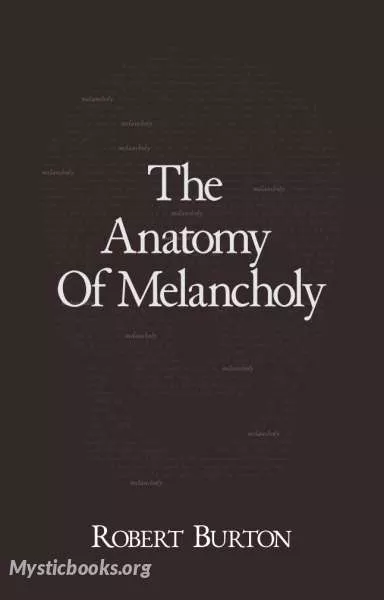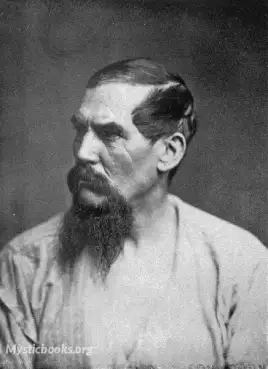
The Anatomy of Melancholy
'The Anatomy of Melancholy' Summary
Burton defined his subject as follows:
Melancholy, the subject of our present discourse, is either in disposition or in habit. In disposition, is that transitory Melancholy which goes and comes upon every small occasion of sorrow, need, sickness, trouble, fear, grief, passion, or perturbation of the mind, any manner of care, discontent, or thought, which causes anguish, dulness, heaviness and vexation of spirit, any ways opposite to pleasure, mirth, joy, delight, causing forwardness in us, or a dislike. In which equivocal and improper sense, we call him melancholy, that is dull, sad, sour, lumpish, ill-disposed, solitary, any way moved, or displeased. And from these melancholy dispositions no man living is free, no Stoic, none so wise, none so happy, none so patient, so generous, so godly, so divine, that can vindicate himself; so well-composed, but more or less, some time or other, he feels the smart of it. Melancholy in this sense is the character of Mortality... This Melancholy of which we are to treat, is a habit, a serious ailment, a settled humour, as Aurelianus and others call it, not errant, but fixed: and as it was long increasing, so, now being (pleasant or painful) grown to a habit, it will hardly be removed.
In attacking his stated subject, Burton drew from nearly every science of his day, including psychology and physiology, but also astronomy, meteorology, and theology, and even astrology and demonology.
Much of the book consists of quotations from various ancient and medieval medical authorities, beginning with Hippocrates, Aristotle, and Galen. Hence the Anatomy is filled with more or less pertinent references to the works of others. A competent Latinist, Burton also included a great deal of Latin poetry in the Anatomy, and many of his inclusions from ancient sources are left untranslated in the text.
The Anatomy of Melancholy is an especially lengthy book, the first edition being a single quarto volume nearly 900 pages long; subsequent editions were even longer. The text is divided into three major sections plus an introduction, the whole written in Burton's sprawling style. Characteristically, the introduction includes not only an author's note (titled "Democritus Junior to the Reader"), but also a Latin poem ("Democritus Junior to His Book"), a warning to "The Reader Who Employs His Leisure Ill", an abstract of the following text, and another poem explaining the frontispiece. The following three sections proceed in a similarly exhaustive fashion: the first section focuses on the causes and symptoms of "common" melancholies, while the second section deals with cures for melancholy, and the third section explores more complex and esoteric melancholies, including the melancholy of lovers and all varieties of religious melancholies. The Anatomy concludes with an extensive index (which, many years later, The New York Times Book Review called "a readerly pleasure in itself"). Most modern editions include many explanatory notes, and translate most of the Latin.
Book Details
Language
EnglishOriginal Language
EnglishPublished In
1621Authors

Richard Francis Burton
England
Sir Richard Francis Burton was a British explorer, scholar and soldier. He was famed for his travels and explorations in Asia, Africa, and the Americas, as well as his extraordinary knowledge of langu...
Books by Richard Francis BurtonDownload eBooks
Listen/Download Audiobook
- Select Speed
Related books

The Honour of the Gout by Philander Misaurus
It is a satirical pamphlet written by an anonymous author under the pseudonym Philander Misaurus. The pamphlet is a witty and humorous critique of soc...

World-Power and Evolution by Ellsworth Huntington
Ellsworth Huntington's "World-Power and Evolution" delves into the intricate relationship between climate, civilization, and human progress. He argues...

Two Years and Four Months in a Lunatic Asylum by Hiram Chase
Hiram Chase is a well liked Reverend in a small ministry in Utica. When his mental and physical health deteriorates, he is taken to Utica lunatic asyl...

Breath of Life by George Catlin
George Catlin, renowned American artist, dedicated years of his life immersing himself in the lives of the Plains Indians during the 1830s. Through hi...

Bicycling for Ladies by Maria E. Ward
Published in 1895, "Bicycling for Ladies" by Maria E. Ward is a fascinating glimpse into the Victorian era's attitudes towards women and cycling. The...

Eminent Doctors: Their Lives and Their Work; Vol. 1 by George Thomas Bettany
Embark on a captivating journey through the annals of medical history with "Eminent Doctors: Their Lives and Their Work; Vol. 1" by George Thomas Bett...

The Quarrel by Madison Cawein
A quarrel between siblings can be as fierce as a battle between two armies. In this poem, Madison Cawein captures the raw emotion of a sibling quarre...

Colored People of Chicago by Louise DeKoven Bowen
This book provides a detailed overview of the living conditions of African Americans in Chicago in the early 20th century. The study was conducted by...

Unmasked, or the Science of Immorality. To Gentlemen by Mary Edwards Walker
'Unmasked' is a curious and controversial Victorian-era text that explores the complexities of human sexuality. Written by Mary Edwards Walker, a pio...

An Introduction to Yoga by Annie Besant
It provides an accessible introduction to the philosophy and practice of yoga, with a focus on the teachings of the Indian sage, Patanjali. Besant exp...
Reviews for The Anatomy of Melancholy
No reviews posted or approved, yet...